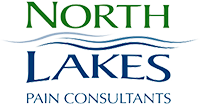The Difference Between Herniated Discs and Bulging Discs
The Difference Between Herniated Discs and Bulging Discs
The Difference Between Herniated Discs and Bulging Discs
Discs are the cushions between the vertebrae in the spine. They are made up of cartilage – soft cartilage on the inside with an outer layer of tough cartilage. The 23 vertebral discs in the back have three main roles: to act as a shock absorber, to allow for spinal mobility, and to act as ligaments that hold the vertebrae together.
The discs are primarily made up of water at birth, and over time, they dehydrate and degenerate. This causes the joints to become stiff. These changes in the spine can cause pain and abnormalities in the discs and their structure.
Chances are, the terms bulging disc and herniated disc are familiar. They are both common to patients who suffer from back pain, but are very different conditions.
What is a Bulging Disc?
Bulging discs occur when the disc becomes dehydrated and its circumference increases. Think of a hamburger that is too big for the bun. Only the outside, tough cartilage layer is affected.
Age-related conditions like lumbar stenosis and other degeneration issues can cause bulging discs. Because it is a degenerative condition, the symptoms can take a long time to fully appear, but can affect the buttocks, upper legs, and most commonly, the back.
There are a multitude of treatment options, depending on the severity of your pain and the number of discs that are bulging.
- Short term treatments: Anti-inflammatory medications & steroid injections
- Long term treatments: Exercise program or lumbar decompression
What is a Herniated Disc?
Herniated discs, also called ruptured or slipped discs, are typically much more painful than bulging discs. This is because herniated discs occur when there is a crack in the outer cartilage, exposing the inner, soft cartilage. The soft cartilage can seep through the cracked outer layer and has the ability to reach nerve roots, causing immense pain.
Herniated discs are most frequently caused by acute injuries or strain on the back, such as twisting, lifting heavy objects, or in some cases, obesity. The added weight and strain on the spine can cause ruptures. A sedentary lifestyle can cause the back to weaken and also cause discs to become herniated.
Herniated discs can be prevented by maintaining proper body weight, performing core-strengthening exercises, and keeping good posture while sitting and standing.
Treatments options come in a variety of options:
- Over-the-Counter medications: for mild to moderate pain, OTC pain relievers can alleviate the pain.
- Cortisone injections: Corticosteroids may be used to suppress inflammation around the nerve area.
- Therapy: Physical therapy can help improve posture and teach exercises designed to minimize pain.
- Surgery: If other treatment options fail, and you experience numbness, loss of bladder control, or difficulty standing, surgery may be your best option.
Both herniated discs and bulging discs can be treated without surgery, in most cases. With evolving technology, it has become easier and easier for physicians to treat back pain with non-medicated techniques.
Sources:
Penn Medicine: Bulging Disc vs. Herniated Disc
